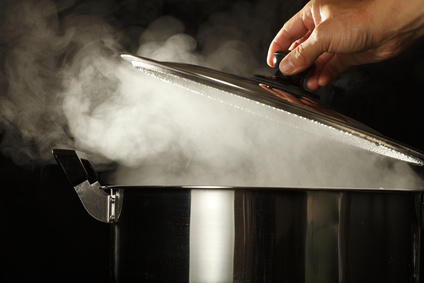Today, we’re diving into an essential topic that will elevate your family stories from good to unforgettable. We’re exploring the art of using ‘Scene’ and ‘Summary.”Just like a chef knowing when to add a dash of spice or a sprinkle of sugar, as family history writers, we need to understand when to use a scene or a summary. Are you ready to master this delicate balance? Watch today’s Storylines.
Scene vs Summary: How to Strike the Perfect Balance in Your Family History Narratives
4 thought on “Scene vs Summary: How to Strike the Perfect Balance in Your Family History Narratives”
Comments are closed.
Related Post

Turning Back TimeTurning Back Time
When compiling a family history story, writers often get tripped up by time. They start writing and quickly find themselves time traveling and before you know it the flashback has become the story, or the present story has been taken over by the backstory.
Backstory and flashbacks are both used in writing to convey an event before the present story. However, backstory and flashbacks are often confused. Both should be used in your family history with caution. Let’s take a look at each so we can understand how they each play a different yet important role in telling a family history story.
Backstory is the story before the story. It is the accumulation of earlier events and accounts of your ancestor’s past that transpired before the current story events. It is the baggage, the effects of these events that your ancestor carries with them into your story and motivates them in the present action. Backstory is at the root of your ancestor’s personality and motivation. Remember that motivation we talked about in Goals, Motivations, and Stakes. It is the reason for the events happening in the present story. Backstory is conveyed through exposition and is everything that happened in your ancestor’s world prior to the point you open that world to your readers. However, backstory is not the place to unload your ancestor’s history. It’s not a place to dump all your research, but the place to reveal your ancestor’s motivations that stem from their past and drives the storyline.
Flashback is a tool writers use to give the reader a window into the ancestor’s past. It is employed by the writer to bring the past into the present usually through a scene. Family history writers often misuse flashbacks in conveying their story. They tend to use flashbacks as the story. However, flashbacks are not the story but a tool to help add another layer to the story, an opportunity for the character to recall a memory that is relevant to something happening in the current story. Flashbacks should not compete with the current story, or become the current story but enhance it. Flashbacks are also not backstory but can be used to deliver backstory. They are similar in that they allow writers to interrupt the current story to add an explanation or answer a question.
When to Choose Flashback over Backstory
Choose a flashback when you wish to evoke an emotional response to an event that happened before your story line.
Choose a flashback when you want to convey a detailed picture of the past.
Choose a flashback when a scene is needed rather than more long narrative summary.
Choose a flashback when you need to break up the pacing.
Choose a flashback when the reader has to remember this information because it’s important to the rest of the story.
Choose a flashback when you want to tell another story, another part of your ancestor’s life.
If you want to know how to write flashbacks effectively in your family history story, read this post for some suggestions.

Cooking Up a Satisfying SceneCooking Up a Satisfying Scene
Like a good pot of soup on a cold’s winter’s day, every family history scene requires some essential ingredients to make them successful. Without a tasty broth, some colourful veggies, and a fat noodle the soup will just not satisfy. The same can be said for a scene, if it’s missing an essential ingredient it will likely fall flat and you may lose the interest of your reader. Today, we look at the ingredients that make a satisfying scene. Let’s identify the key ingredients in a family history scene each one closer so that you can create powerful and fulfilling scenes for your reader.
Protagonist Ancestor
The majority of your scenes should be built around your protagonist ancestor. Your protagonist ancestor is the main character of your story and through whose point of view, the story will be told. In each scene, your protag ancestor will be involved in action or dialogue. Make sure that you’ve chosen a single ancestor from which point of view that story will be told.
Action
Every scene shows some dramatic movement, large or small. It creates a sense of movement through time and space. It could be actual action or even dialogue which gives the essence of movement within a scene. Without action, you have no scene.
We want to demonstrate our ancestor’s movements, feelings, actions, and reactions. Don’t tell us about them, show them offer up the proof in the form of a scene.
Scene Goal
Every scene has a goal. We know that our story also has a goal, however, this is different from the scene goal. The scene goal begins and ends in the scene, but contributes to the overall advancement of the story.
Antagonist and Allies
Your protagonist ancestor needs someone to interact with, these will come in the form of an antagonist who opposes your ancestor’s goals or allies who will help your ancestor to achieve her goal.
New Information
Each scene builds on the previous scene providing new information that keeps moving the story forward. If it doesn’t move the story forward then perhaps it doesn’t belong in the story.
Setting and Time Period
Setting and time period is essential to grounding your scene through sensory details and description.
Theme
The overall meaning of your story is conveyed within scenes using images and sensory details.
Tension
Not only organizing your scenes within the story but by creating a feeling of conflict and uncertainty within a scene will keep the reader guessing as what is next and will keep them turning the pages.
Great Endings
Scenes can end in any number of ways. Some may end on a high-note, with a small victory for your ancestor, or in defeat. It can end with a cliff-hanger or some uncertainty. It’s important that each scene ends in such a way that it eludes to future obstacles for your ancestor and a yearning in your reader to know what happens next.
Make sure your story scenes have all the right ingredients.
Thank you
Thanks Lynn;
Osmosis is a slow process but it is working.
The light is flashing and I’m getting the jist of writing stories.
Thank you for this clarification. I’m developing a critical biography of my maternal great-grandmother who was a civic leader (and more). As I sift through my research results, I now understand to question what I want to give my reader, and with that I will better understand how to develop the scene or information at hand. ‘Looking forward to the next video on this topic.
What a wonderful explanation. As I work on a friend’s family tree, your lesson can be used immediately. I know right where to go in her family’s story to make it more interesting. Before watching this video, I didn’t. Very nice!